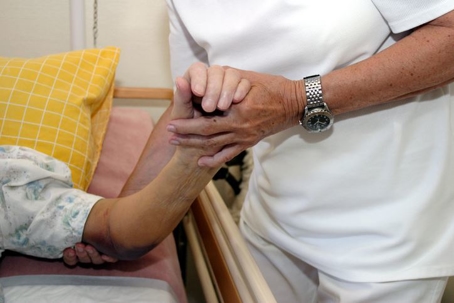In a healthcare setting, one of the most critical concerns that may get overlooked is patient neglect. If the provider is not attending to the patient, they could experience adverse health conditions like bedsores which can lead to sepsis and other serious complications. So, what are bedsores, and why are they dangerous? Keep reading for more information.
What Are Bedsores?
Bedsores are ulcers that appear on areas that have prolonged contact and pressure from lying in bed, sitting in a wheelchair, or wearing a cast. These ulcers are also called pressure injuries, pressure sores, pressure ulcers, or decubitus ulcers.
According to Johns Hopkins, bedsores can be a serious problem for older, frail adults and can be caused by the quality or lack of the care the patient receives. These injuries appear most often in immobile or bedridden patients who are not turned, positioned, or cared for properly. Those with diabetes, circulation problems, and nutritional deficiencies may be at higher risk for bedsores and related infections.
Cause
Bedsores develop when blood supply to the skin is cut off for more than two hours. This causes the skin to die and develop a red, painful area that may turn purple over time. If left untreated, bedsores can open and become infected.
Depending on the condition of the patient and the duration of time they are left without care, bedsores may become deep and extend to the muscle and bone. These pressure injuries are slow to heal and very painful. Healing time depends on the patient, but if preexisting conditions exist like diabetes, one sore can take days or years to heal and may require surgery if they are deep enough.
Vulnerable Areas
Pressure injuries are most common on the:
- Buttocks, tailbone, or hips
- Shoulder blades
- Heels of the feet
- Back of the head
- Back or side of the knees
Protruding body parts and joints are most vulnerable, and depending on the area, can quickly worsen without property treatment. Not only can bedsores become deep and reach the bone, but an infection can also cause a patient to contract sepsis which is deadly without medical intervention. Patients who are unconscious s or unable to sense pain are especially vulnerable to pressure sores and are also less likely to report the developing condition to their health care provider.
Symptoms
Bedsores may go through four stages from their first appearance to the most severe stage of development.
- Stage 1: The are is red and warm to the touch. For darker skin tones, a sore may appear blue or purple. The patient may complain about burning, itching, or pain localized in the area.
- Stage 2: The are is visibly more damaged and may appear as an open sore, scrape, or blister. The pain of the pressure injury increases, and the patient may complain of significant pain and discoloration around the wound.
- Stage 3: The area looks like a crater due to extensive damage below the skin. Pain is very severe.
- Stage 4: The are is severely damaged with a large wound. Muscles, tendons, joints, and bones may be damaged and/or visible through the wound. Infection is a major concern at this stage and the patient may experience extreme pain and discomfort along with limited mobility.
If the wound has full-thickness tissue loss and the base of the sore is coated by slough or there is eschar in the wound bed it is not assigned a stage. Slough and eschar may appear tan, brown, gray, green, or black. At this point, the sore is very severe and may appear burn-like.
Treatment
The treatment of a pressure injury depends on the severity and condition of the patient. Most mild sores can be treated by rotating the patient regularly to allow blood flow and healing. For open bedsores, treatment may include:
- Keeping the wound clean
- Negative pressure wound therapy
- Antibiotics
- Removing pressure
- Transplanting healthy skin to the infected area (skin graft)
- Removing the damaged, infected, and dead tissue through debridement
- Ensuring healthy nutrition
Regardless of the stage bedsores may be diagnosed as healthcare professionals will monitor the sore closely and document size, depth, and healing or the lack thereof. Tissue damage and more severe cases often require more intense medical treatment and observation.
Bedsores and Patient Neglect
Bedsores and pressure injuries are a direct result of patient neglect. Health care providers are required to turn and adjust the position of bedridden patients to avoid bedsores. Arguably, pressure sores are also a form of malpractice, especially in cases where the patient is at a medical facility because of another severe condition and cannot turn or help themselves to prevent such injuries.
While these sores do not seem severe, they can become worse and cause death by infection if left untreated for a prolonged period. Any neglect-related injury is cause for concern and may be grounds for legal action.
If you or a loved one was diagnosed with bedsores from patient neglect, contact the Law Offices of David Kates. Our attorney can help you pursue the compensation you deserve.

